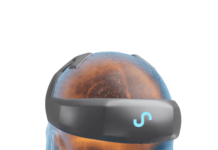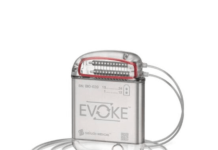Salvia BioElectronics, a clinical-stage medical device company pioneering neuromodulation therapy for people with chronic migraine, announced the successful completion of a $60 million (€53 million) Series B financing round. The round was led by Innovation Industries, a European deeptech venture capital firm, with participation from Invest-NL and EIC Fund. Existing investors Inkef, Panakès Partners, SHS Capital, Dolby Family Ventures, BOM and Thuja Capital also joined the round. The funds enable Salvia to complete clinical development and prepare for the commercial launch of MySalvia Therapy, which is currently evaluated in the RECLAIM study, a multi-center, double-blind, sham-controlled study for people with chronic migraine. The funds also allow Salvia to focus on obtaining FDA market authorization in the US and regulatory approvals in Europe and Australia.
Related: Pulnovo Medical welcomes EQT as a new investor, following CE-MDR approval
Salvia is transforming migraine treatment with its proprietary neuromodulation technology, a personalized, minimally invasive therapy designed for people with chronic migraine. Salvia’s ultra-thin implant targets key nerves involved in migraine, aiming to reduce the frequency and intensity of migraine attacks.
“With the support of this strong investor syndicate, we are empowered to bring MySalvia Therapy to patients in desperate need of new treatment options,” said Hubert Martens, founder and CEO of Salvia BioElectronics. “Chronic migraine is not ‘just a headache’. It is a debilitating neurological condition that forces people out of their social life, their work, and the life they want to live. Our mission is to restore their freedom. MySalvia Therapy is designed to provide not just relief, but meaningful and lasting impact. We believe people with migraine deserve the opportunity to reclaim their lives. With this funding, we are advancing toward regulatory approval and commercialization, with the ultimate goal of reaching millions of people affected by chronic migraine.”
Migraine is one of the leading causes of disability worldwide, resulting in an estimated $110 billion annually in lost productivity and medical costs in the EU and US alone. Current treatment options do not always provide sufficient relief, with the majority of chronic patients discontinuing their medication within the first year. This high dropout rate highlights the urgent need for alternative therapies.
“Salvia BioElectronics is redefining the migraine therapy landscape with a bold, patient-centered approach that combines cutting-edge neuromodulation with an elegant, minimally invasive design”, said Caaj Greebe, Partner at Innovation Industries. “At Innovation Industries, we invest in breakthrough technologies that have the potential to solve the most pressing real-world challenges and Salvia BioElectronics does exactly that: offering life-changing solutions for millions of people living with chronic migraine. We are excited to partner with the Salvia team as they advance through their clinical development to deliver a meaningful new therapy.”
Salvia’s FDA-designated Breakthrough Device represents a promising new treatment option for patients who have not responded to available therapies. Early clinical data indicates a potential reduction in the frequency and intensity of migraine attacks when using the company’s neuromodulation technology. The RECLAIM study is currently underway in Europe and Australia, with additional studies planned in the US to evaluate the therapy’s safety and effectiveness.
Salvia’s implant is significantly less invasive than conventional technology, which reduces surgical complexity, patient recovery time, and offers a visually discreet solution.
MySalvia Therapy is designed to put patients in full control. The therapy uses two ultra-thin implants, placed just beneath the skin of the forehead and the back of the head. Salvia’s approach is user-activated and on demand. To activate therapy, patients use an external wearable device and simply press a button to deliver targeted stimulation exactly when and where it is needed.
The technology also holds promise for treating cluster headache, a severely painful neurological condition with few effective treatment options.






